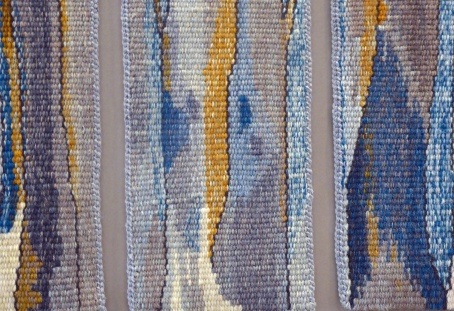An interesting joint exhibit at the exhibition – is the village of Pinbury. In case you have never heard of it here is it’s history and a birds eye view of the village itself!

WELCOME TO PINBURY IN STITCHSHIRE
The little village of Pinbury lies in a quiet corner of Stitchshire. On the banks of the the River Pinn and guarded by Pinbury Castle, this secluded place offers a warm welcome to visitors.
Domesday Book records the name of “Pinnbeorg” (meaning “Pin Hill”) and the village has been associated with pins from earliest times. An extraordinary number of pins were unearthed recently in an archaeological dig recently organised by the local community and the occasional pin is also found from time to time immured in building fabric.
Among its many attractions for visitors, Pinbury boasts its picturesque and well-appointed Ship Inn. A tearoom too has recently opened in the village shop. Those with an interest in the growth and development of the village may like to note Pinbury Mill for the honourable place it occupies in the history of the area’s textile industry. Medieval Pinbury Castle is also well worth a visit, as is the parish church, which is dedicated to St Anne, patron saint of seamstresses.
The village has been shortlisted several times in the Stitchshire competition for Best-Kept Village in the “small village” category. The Ship Inn features in the judges’ commendations, with its abundant summer floral displays, and many householders have followed its example by embellishing their homes in a variety of delightful ways. Victory in the competition would be well deserved. In the opinion of the judges, however, the overall appearance of the village is sadly let down by untidy commercial development on its outskirts around the dilapidated former forge.













 T
T






 mystery!
mystery!



